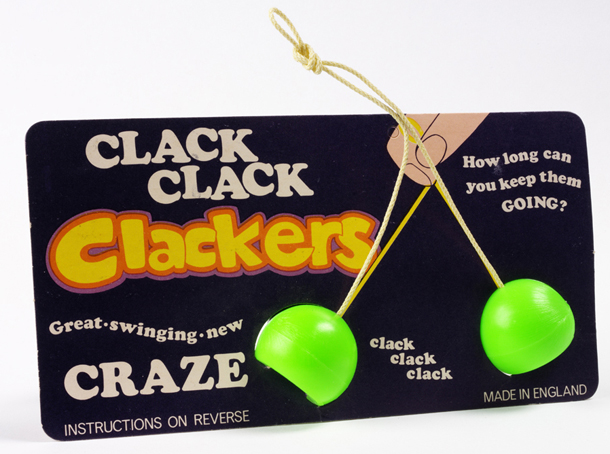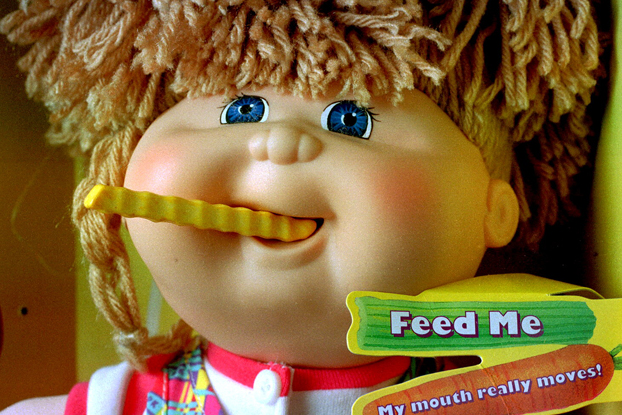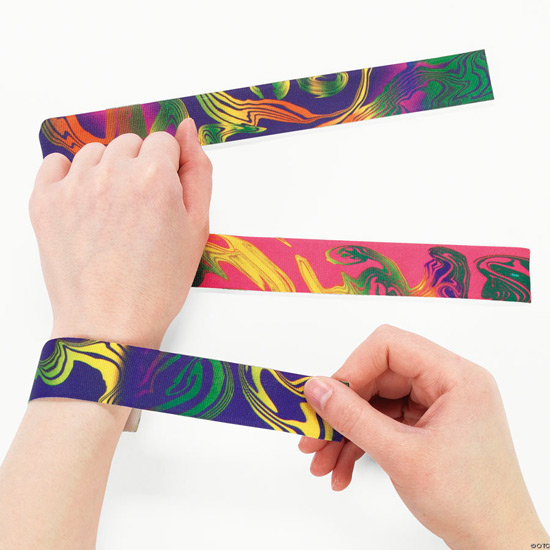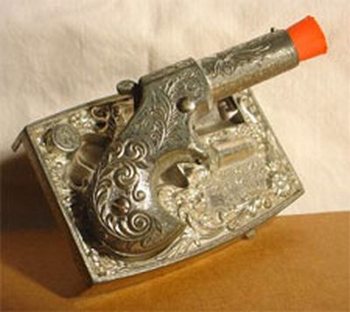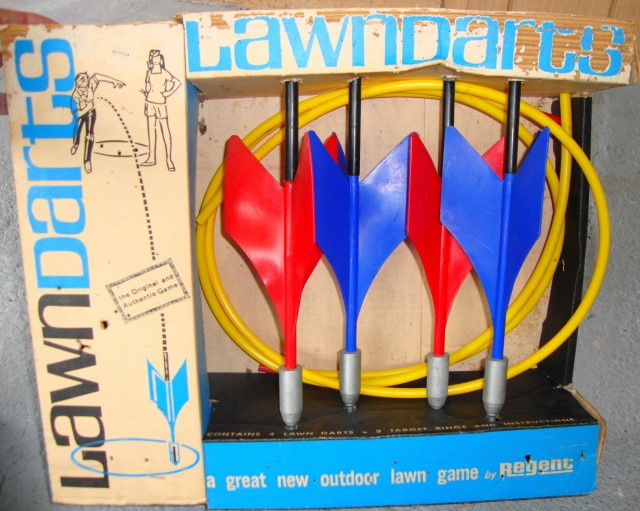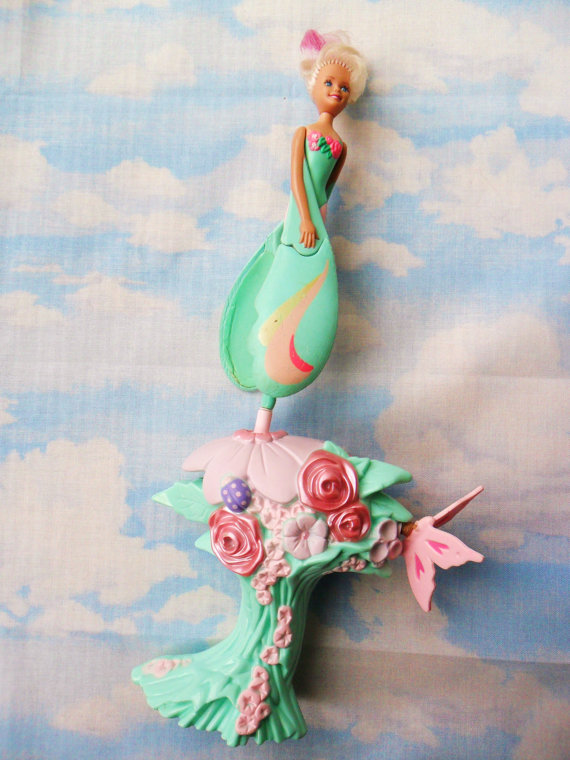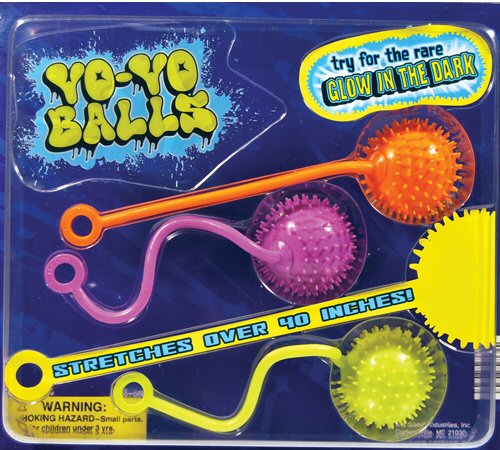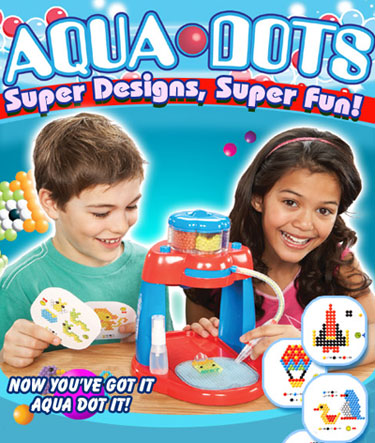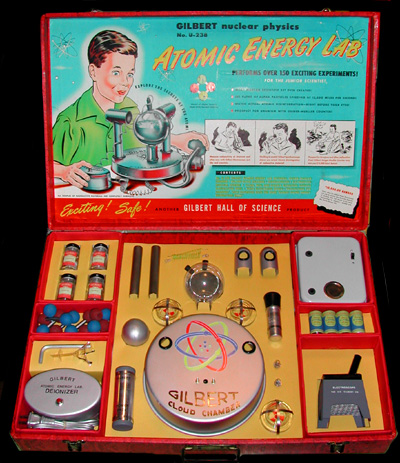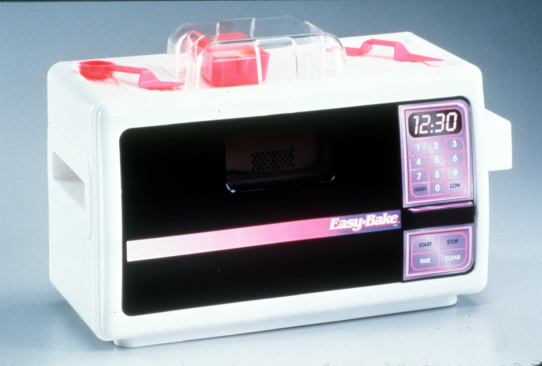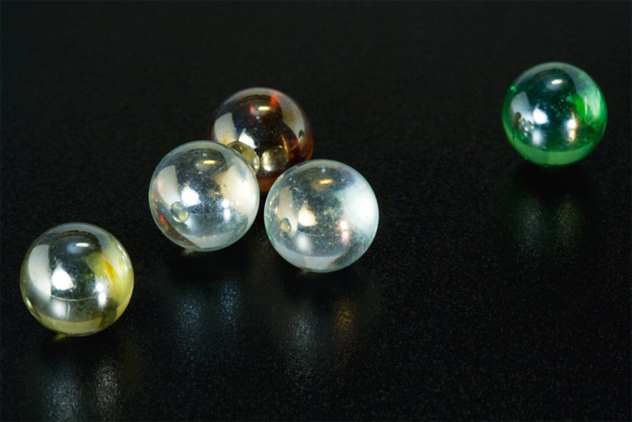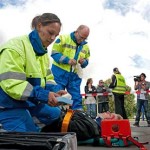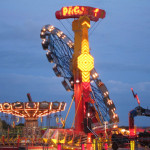From the 1950s to the late 90s, many toys came onto the market that seemed great at first – that is until children started getting seriously injured while playing with them. Below is a list of toys and descriptions of why they were banned.
The Cabbage Patch Snacktime Kids were battery-powered and would move their mouths mechanically to simulate “real chewing” when children placed plastic food in their mouths. The problem was that children’s hair and fingers also activated the moving mouth, quickly making this toy considerably dangerous. In 1997, Mattel recalled Snacktime Kids.
The Slap Bracelet was a total hit in the 1990s – literally! In order for the bracelets to secure around the wrist, a person had to slap the bendable bracelet on their wrist before it wrapped. Because of all the reported injuries, many schools across the country had to ban them.
In the 1950s, the Belt Buckle Derringer Toy Gun was popular among boys. When worn around the waist, this belt buckle gun would fire a toy bullet and a cap when the user extended his stomach. The problem with this toy is that the caps could accidently ignite from friction, causing serious burns.
Lawn Darts were constructed of solid metal and were heavily weighted, and were responsible for over 7,000 injuries. In 1988, the Consumer Product Safety Commission banned them from sale in the United States.
Sky Dancers were hard plastic winged toys that propelled into the air. The toy was placed in a base, and when the string was pulled, the dancer would fly into the sky and spin. The problem with this toy was that is flew in unpredictable direction, hitting users. Injuries included: chipped teeth, face lacerations, temporary blindness, and even one mild concussion was reported.
In 1985, Clackers were banned when it was found that the acrylic balls would shatter if swung too hard. Clackers, also known as Click Clacks and Knockers, featured two large acrylic balls that were attached to either end of a heavy string.
The Yo-Yo Water Ball is made out of not water, but instead flammable diesel hydrocarbons. This toy has been banned in Illinois, New York, and New Jersey. Strangulation can occur if the stretchy cord wraps around a child’s neck.
Craft play sets consisted of spray adhesive and small parts – two danger variables for children. And because the adhesive was toxic and the small parts were choking hazards, many of these play sets have been banned from production.
In the early 1950s, the U-238 Atomic Energy Lab Set was released to stores. Using real uranium-bearing ore samples, children could watch as mist trails were created by particles of ionizing radiation.
The Easy-Bake Oven was a childhood staple in the 90s. But it was not too long after it was voted into the National Toy Hall of Fame in 2006 that Hasbro had to recall the tiny oven. It turns out that many children were getting their fingers stuck in the oven that reach temperatures of up to 400 degrees Fahrenheit.
Monster Science Colossal Water Balls were similar to those toy capsules that when placed in water, a tiny dinosaur-shaped sponge would emerge, except the water balls just grew – to nearly 400 times its original size. But that is not the danger specifically. The danger came when children ingested the water balls, as the balls were still able to expand within a child’s body. And on top of that, the “Growth Powder” included in the kit would cause extreme vomiting and dehydration. And what is more, is that these items are invisible on X-rays and surgery was required to remove them.


